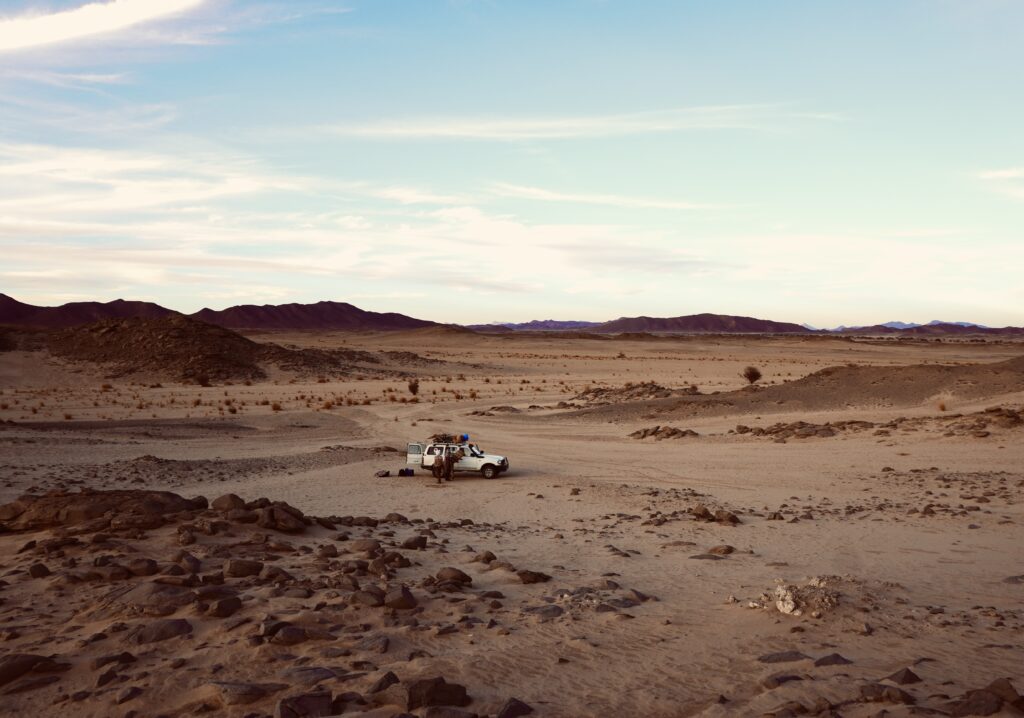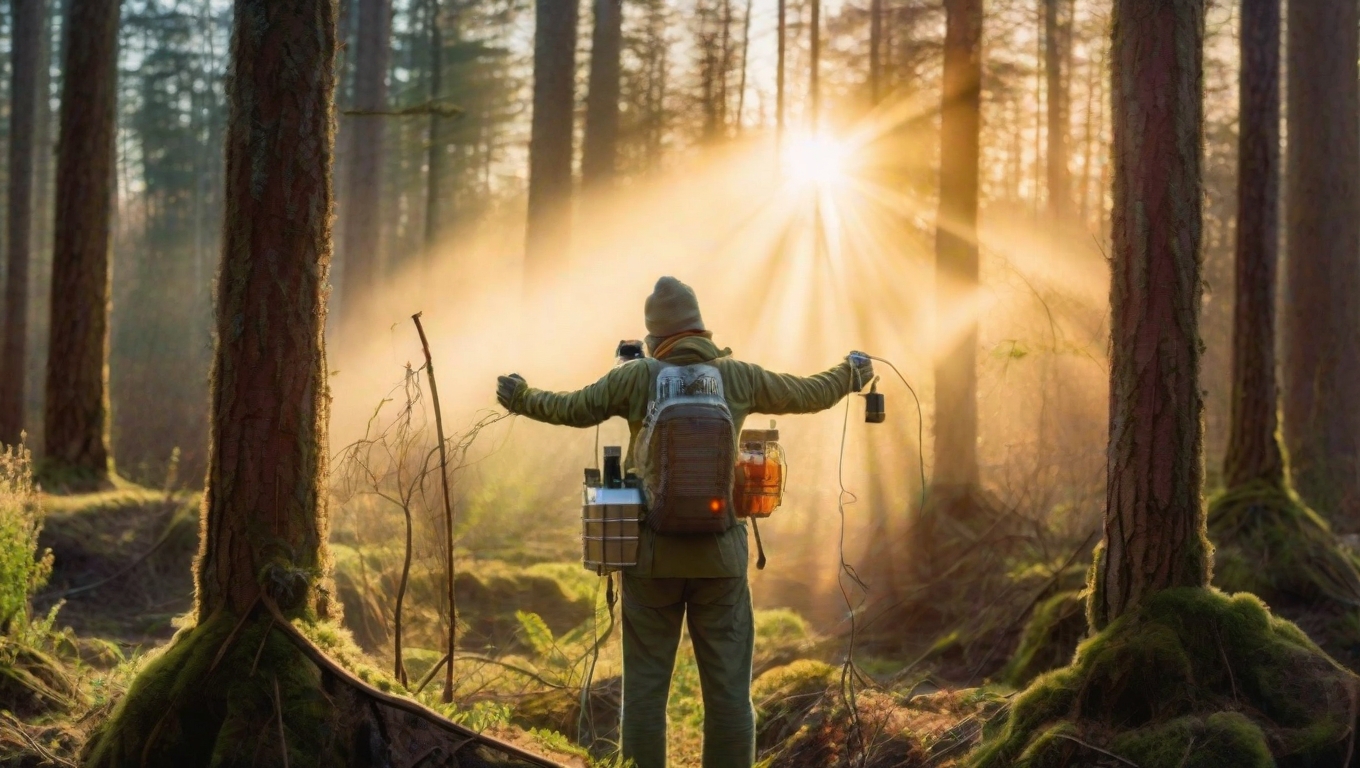

Finding Shelter
Understanding the Importance of Shelter
When venturing into the wilderness, finding shelter should be your top priority. A shelter not only protects you from the elements but also provides a sense of security and comfort. It helps regulate body temperature, shields you from wind and rain, and offers a place to rest and recharge. Understanding the importance of shelter can mean the difference between surviving and succumbing to the harsh conditions of the wilderness.Recognizing Suitable Natural Shelters
In your quest for shelter, it is crucial to develop an eye for recognizing suitable natural shelters. These can include caves, rock formations, and fallen trees. Look for areas that offer protection from wind and rain, such as overhanging cliffs or dense foliage. Remember to avoid areas prone to flooding or where the risk of falling debris is high. When identifying natural shelters, make sure they are free from potential hazards and provide a secure and dry environment.Building Temporary Shelters
When natural shelters are not readily available, it is essential to know how to build temporary shelters. These shelters can be constructed using materials such as branches, leaves, and even snow. A basic lean-to shelter, for example, can be made by propping one side of a long branch against a sturdy support and covering the other side with leaves or other natural materials. Remember to create a raised bed inside the shelter to insulate yourself from the cold ground.Constructing Long-Term Shelters
If you find yourself in a survival situation where you need a long-term shelter, consider building a more substantial structure. A debris hut is an excellent example of a long-term shelter that can provide protection from all types of weather. Creating a frame with sturdy branches, covering it with debris such as leaves, grass, or brush, and sealing any gaps for insulation, can provide a reliable and durable shelter for extended periods. Make sure to choose a location that is well-drained and away from potential hazards.Locating Water Sources
Recognizing the Significance of Water
Water is a vital resource for wilderness survival. It is essential for hydration, food preparation, and maintaining overall health. Recognizing the significance of water and understanding how to find and procure it safely should be one of your top priorities in the wilderness.Identifying Natural Water Sources
In the wild, natural water sources can be found in various forms, such as lakes, rivers, streams, and even underground springs. However, not all water sources are safe to drink without purification. It is crucial to identify and assess water sources before consuming them. Look for clear, flowing water whenever possible, as stagnant water can harbor bacteria and other contaminants. Avoid water sources near industrial or agricultural areas, as they may be polluted. If necessary, use your surroundings to create natural filters or opt for purification methods to ensure the water is safe for consumption.Purifying Water for Safe Consumption
Even when you find a seemingly clean water source, it is still wise to purify the water before consuming it. There are several methods you can use to purify water in the wilderness. Boiling water for at least one minute will kill most microorganisms, making it safe to drink. Chemical purification tablets or drops can also be used to kill bacteria and viruses. Additionally, portable water filters can effectively remove contaminants from water sources, providing you with safe drinking water. Be sure to follow the instructions for each method carefully to ensure water purity.
Securing Food
Knowing the Priorities of Wilderness Survival
Securing food in the wilderness is essential for sustaining your energy levels and overall well-being. However, it’s crucial to understand the priorities of wilderness survival. In the initial stages of survival, focus on finding shelter, locating water, and ensuring your safety before dedicating time and energy to food procurement. Once you have those basic necessities covered, you can divert your attention to finding sustenance in the wild.Finding Edible Plants
Wilderness environments often offer a wide variety of edible plants that can provide essential nutrients. Familiarize yourself with common edible plants in the area you are exploring. Look for plant characteristics such as recognizable fruits, nuts, or leaves that resemble those of known edible plants. Be cautious and avoid any plants that you are unsure about, as some plants can be toxic or cause allergic reactions. Remember to learn about basic plant identification and always test a small portion of a new plant before consuming a significant quantity.Hunting and Trapping Animals
To secure a more substantial source of protein, hunting and trapping animals in the wild may be necessary. Before attempting to hunt or trap animals, familiarize yourself with local laws and regulations regarding hunting and the ethical treatment of wildlife. Learn about animal tracks, signs, and behavior to increase your chances of success. Constructing simple traps or snares can also be an effective method for catching small game. However, always prioritize safety and act responsibly when engaging in hunting or trapping activities.Gathering and Fishing for Food
Another method for securing food in the wilderness is through gathering edible wild foods and fishing. Look for berries, nuts, roots, and other edible plant parts that provide valuable nutrients. Take precautions to ensure you are not consuming toxic plants or causing harm to the environment. Fishing can also provide a reliable source of protein. Learn about different fishing techniques, such as using a fishing rod, making simple fishing spears, or setting up fish nets. Remember to follow local fishing regulations and guidelines to maintain a sustainable fish population.Building and Maintaining a Fire
Understanding the Importance of Fire
Fire is not only a source of warmth but also essential for survival in the wilderness. It provides light, protects against wildlife, and allows for cooking food and purifying water. Understanding the importance of fire and knowing how to build and maintain it is crucial for your overall well-being and survival.Gathering Firewood and Preparing a Fire Pit
Before starting a fire, gather an ample supply of firewood. Look for dry twigs, branches, and dead leaves. Collect them from the ground, avoiding live trees or vegetation. Once you have gathered enough firewood, prepare a fire pit by clearing away any flammable objects or debris from the area. Create a small depression for the fire and surround it with rocks to contain the flames.Creating and Igniting Fire
There are several methods you can use to create fire in the wilderness. One of the most common techniques is using a fire starter kit, which typically includes a ferrocerium rod and a scraper. Strike the rod with the scraper to create sparks, aiming them at a small bundle of dry leaves or bark to ignite. Another method is using a magnifying glass or lens to concentrate sunlight onto a piece of tinder, such as dry grass, leaves, or cotton balls, until it ignites. Whichever method you choose, remember to start small and gradually add more firewood to sustain the flames.Sustaining a Fire and Fire Safety
Maintaining a fire requires constant attention and care. Ensure a sustainable fire by adding firewood gradually, ensuring proper airflow. Keep the fire small and manageable, preventing it from spreading beyond the fire pit. It’s essential to follow fire safety guidelines, such as never leaving a fire unattended and fully extinguishing it before leaving the area. Familiarize yourself with fire regulations and restrictions in the area to prevent accidental wildfires. Always prioritize safety and respect the environment when using fire for survival purposes.
Navigating in the Wilderness
Understanding Basic Navigation Techniques
Navigating in the wilderness can be challenging, especially without the aid of modern technology. Understanding basic navigation techniques can help you find your way and prevent getting lost. Start by developing your map-reading skills and learning how to use a compass properly. Familiarize yourself with basic directional terms, such as north, south, east, and west, and learn to identify natural landmarks that can serve as references when navigating.Using Compass and Map
Carrying a compass and map is crucial for wilderness navigation. Learn how to orient yourself using a compass, aligning the magnetic needle with the compass housing and pointing the direction of travel arrow in the intended direction. Use landmarks or known coordinates to determine your position on a map and plan your route accordingly. Remember to regularly reorient yourself and update your position as you progress through your journey.Utilizing Natural Navigation Methods
In addition to compass and map navigation, understanding natural navigation methods can be beneficial when exploring the wilderness. Observe the movement of the sun to determine east and west during daylight hours. At night, use the stars to identify cardinal directions, focusing on recognizable constellations or the North Star (Polaris) in the Northern Hemisphere. Pay attention to other natural indicators, such as moss growth on trees (which tends to be thicker on the north side), prevailing wind direction, or the flow of rivers and streams. By combining these natural navigation techniques, you can enhance your overall sense of direction and increase your chances of navigating successfully.First Aid in the Wilderness
Preparing a Wilderness First Aid Kit
Being prepared for medical emergencies in the wilderness is essential. Preparing a wilderness first aid kit can help you address common injuries and medical issues. Your kit should include essentials such as adhesive bandages, gauze pads, medical tape, antiseptic wipes, tweezers, and pain relievers. Include any medication you may need, such as prescription medications or allergy relief. It’s also a good idea to include a first aid manual or reference guide specific to wilderness situations.Addressing Common Wilderness Injuries
In the wilderness, injuries can happen unexpectedly. Knowing how to address common wilderness injuries is crucial. Treat cuts and wounds by cleaning them thoroughly with antiseptic wipes and covering them with sterile gauze and adhesive bandages. For sprains or fractures, use splints or improvised materials to immobilize the injured area. When dealing with burns, cool the affected area with water and apply a clean, non-stick dressing. In situations involving severe bleeding, apply direct pressure to the wound and elevate the injured limb if possible. Remember, in the wilderness, it’s essential to address injuries promptly to prevent complications and aid in the healing process.Providing Basic Medical Assistance
In addition to having a first aid kit, understanding basic medical techniques can be invaluable in the wilderness. Learn how to properly clean and dress wounds, apply bandages, and administer CPR if necessary. Familiarize yourself with wilderness-specific medical issues, such as snake bites, allergic reactions, or hypothermia. Consider taking a wilderness first aid course to enhance your skills and knowledge in providing medical assistance in remote environments. Being prepared and having the ability to administer basic medical care can make a significant difference in a survival situation.
Surviving Extreme Weather Conditions
Preparing for Various Weather Scenarios
Surviving extreme weather conditions requires preparation and resilience. Before venturing into the wilderness, research and educate yourself about the climate and weather patterns of the area you will be exploring. Prepare accordingly by packing appropriate clothing and gear for different weather scenarios. Always check the weather forecast before setting out and be prepared for unexpected changes in weather conditions.Dealing with Hot Weather
Hot weather can be challenging to endure, especially without access to modern conveniences. Stay hydrated by drinking plenty of water and eating hydrating foods like fruits and vegetables. Protect yourself from the sun by wearing loose-fitting and lightweight clothing that covers exposed skin. Use sunscreen with a high SPF and seek shady areas during the hottest parts of the day. If available, utilize natural shade from trees or rocks for additional protection. Remember to pace yourself and avoid overexertion in extreme heat to prevent heat-related illnesses such as heatstroke or dehydration.Managing Cold Weather and Hypothermia
Surviving in cold weather requires careful preparation and knowledge. Layer your clothing to trap warmth, starting with a moisture-wicking base layer, insulating middle layers, and a windproof and waterproof outer layer. Insulate yourself from the cold ground using insulating materials or a sleeping pad. If snow is present, consider building a snow cave or igloo for additional protection. Recognize the early signs of hypothermia, such as shivering, confusion, and loss of coordination, and take immediate action to warm up. Gather dry firewood and start a fire to provide warmth and regain body temperature. Prioritize staying dry and maintaining body heat to avoid hypothermia and other cold-related injuries.Handling Rain, Wind, and Storms
Rain, wind, and storms can present significant challenges in a wilderness survival situation. Protect yourself from rain by wearing waterproof clothing and setting up a tarp or shelter to shield yourself and your belongings. Secure your shelter and belongings against strong winds or storms by using sturdy anchor points and reinforcing your structure with additional support. Be cautious of lightning during storms and seek shelter in a sturdy building or a low-lying area away from tall objects. Stay inside your shelter until the storm passes, and always prioritize your safety during severe weather conditions.Understanding Wildlife Encounters
Recognizing Common Wildlife Risks
Encountering wildlife in the wilderness can be an exhilarating experience, but it also carries potential risks. Recognizing common wildlife risks and understanding how to react can help you navigate these encounters safely. Research the types of wildlife you may encounter in the area and learn about their behavior and typical habitats. Be aware of animals that may pose a threat, such as bears, wolves, or venomous snakes. Understanding their behavior and keeping a safe distance can prevent dangerous situations.Avoiding Dangerous Animal Encounters
Minimizing the chances of dangerous animal encounters is crucial for your safety in the wilderness. Make noise while moving through dense vegetation or areas with limited visibility to alert animals of your presence and avoid surprising them. Store food securely to prevent attracting wildlife to your campsite. If you come across a potentially dangerous animal, never approach or attempt to feed it. Instead, back away slowly, giving the animal enough space to move away. Use caution and respect wildlife from a safe distance to reduce the risk of negative encounters.Handling Wildlife Interactions
In the event of an unavoidable wildlife encounter, it is important to remain calm and act responsibly. Maintain a safe distance and do not provoke the animal. If the animal charges or becomes aggressive, you may need to take defensive actions to protect yourself. Stand tall and make yourself appear larger by raising your arms or opening your jacket. Shout loudly and throw objects that are not food or valuable to distract the animal. Avoid turning your back on the animal and slowly back away until you can find a safe place to seek shelter. Remember, treating wildlife with respect and understanding their behavior is essential for your safety and their well-being.Utilizing Essential Tools and Equipment
Identifying Must-Have Survival Tools
Carrying essential survival tools can significantly increase your chances of successful wilderness survival. Some must-haves include a knife, fire starter, compass, whistle, multi-tool, headlamp, and a signaling device such as a mirror or reflective material. These tools help with tasks such as shelter construction, fire building, navigation, and attracting attention for rescuers. Choose durable and quality tools that can withstand the rigors of wilderness survival and become familiar with their proper use before venturing into the wild.
Choosing the Right Knife and Multi-tool
A reliable and sharp knife is one of the most essential tools you can have in the wilderness. Choose a sturdy fixed-blade knife with a full tang for durability. It should be versatile enough to perform tasks such as cutting, carving, and preparing food. Additionally, consider carrying a multi-tool, which combines several useful tools in one compact device. A multi-tool can include features such as pliers, screwdrivers, can openers, and scissors, making it valuable in various survival situations.Understanding the Use of Rope and Cordage
Rope and cordage are versatile tools that can aid in various wilderness survival tasks. Paracord, for instance, is a lightweight and durable cord that can be used for shelter building, securing gear, creating traps, or even as a makeshift clothesline. Learn basic knot tying techniques, such as the bowline knot or clove hitch, to effectively use rope and cordage in different scenarios. Always carry a sufficient length of strong rope or cordage in your survival kit to meet various needs.Maximizing the Benefits of a Survival Kit
A well-prepared survival kit is a valuable asset in the wilderness. It should include a range of essential items such as a first aid kit, fire starter, emergency shelter, water purifier, signaling devices, navigation tools, extra clothing, and food rations. Customize your survival kit to suit your specific needs and the environment you will be exploring. Be familiar with the contents of your kit and regularly check and replace any expired or damaged items. Always carry your survival kit with you, as it is your lifeline in emergency situations.Exploring other Useful Equipment
In addition to essential tools, there is a range of additional equipment that can enhance your wilderness survival experience. Items such as a lightweight camping stove, a water filtration system, a portable solar charger, and a durable backpack can significantly improve your comfort and self-sufficiency in the wild. However, it’s crucial to strike a balance and consider the weight and practicality of each item. Choose equipment that is reliable, versatile, and enhances your ability to meet critical survival needs.How Much Water is Needed for Wilderness Survival?
For wilderness survival, the amount of water needed cannot be overlooked. In demanding environments, water is crucial to maintain hydration and prevent dehydration. Adequate hydration helps regulate body temperature, promotes organ function, and supports physical exertion. It is crucial to calculate and secure an adequate amount of water for survival in order to sustain life in the wild.
Maintaining Mental and Emotional Strength
Coping with Stress and Fear in the Wilderness
Surviving in the wilderness can be mentally and emotionally challenging. Coping with stress and fear is crucial for maintaining a clear and rational mindset. Remember to breathe deeply and take moments to pause and reflect. Focus on the present moment rather than allowing your mind to dwell on worst-case scenarios. Embrace positive self-talk and affirmations to boost your confidence and deal with fear. Look for beauty and inspiration in the natural world around you, finding solace and strength in the wilderness environment.Developing Resilience and Positive Mindset
Developing resilience and cultivating a positive mindset can greatly impact your survival experience. Embrace the challenges as opportunities for growth and learning. Adaptability and flexibility are key traits in surviving the wilderness, so approach obstacles with a problem-solving mindset. Celebrate small victories and find joy in the simplest of things. Surround yourself with positive thoughts and memories, drawing strength from the memories of previous accomplishments. By developing resilience and maintaining a positive mindset, you can overcome obstacles and maintain mental fortitude in even the toughest situations.Building Confidence and Staying Calm
Confidence and calmness are paramount to successful wilderness survival. Trust in your abilities and the knowledge and skills you have acquired. Practice using your tools and equipment before going into the wilderness to build confidence in their use. Stay calm and composed during challenging situations, as panic can cloud your judgment and hinder your decision-making abilities. Take the time to assess each situation carefully and respond accordingly. Building confidence and staying calm allows you to approach survival challenges with clarity and rationality, increasing your chances of survival. In conclusion, wilderness survival requires a combination of knowledge, skills, and the right mindset. From finding shelter and securing food to navigating and dealing with extreme weather, each aspect of survival plays a crucial role in your overall well-being. By understanding the basics and applying them effectively, you can be better prepared for the challenges and uncertainties of the wilderness. Remember to respect nature, prioritize safety, and maintain a positive outlook throughout your wilderness survival journey.
I’m Alex, the author behind True Survivalist. As a survival enthusiast myself, I’ve created this website to serve as a valuable resource for fellow survivalists and preppers. Whether it’s understanding survival situations, emergency preparedness, or finding the right survival gear, I’ve got you covered. Through a series of informative guides, I aim to provide answers to commonly asked questions, debunk common myths, and help you avoid common mistakes. At True Survivalist, I believe in equipping you with the knowledge and tools you need to be prepared for any survival scenario. Join me on this journey of self-reliance and resilience.
